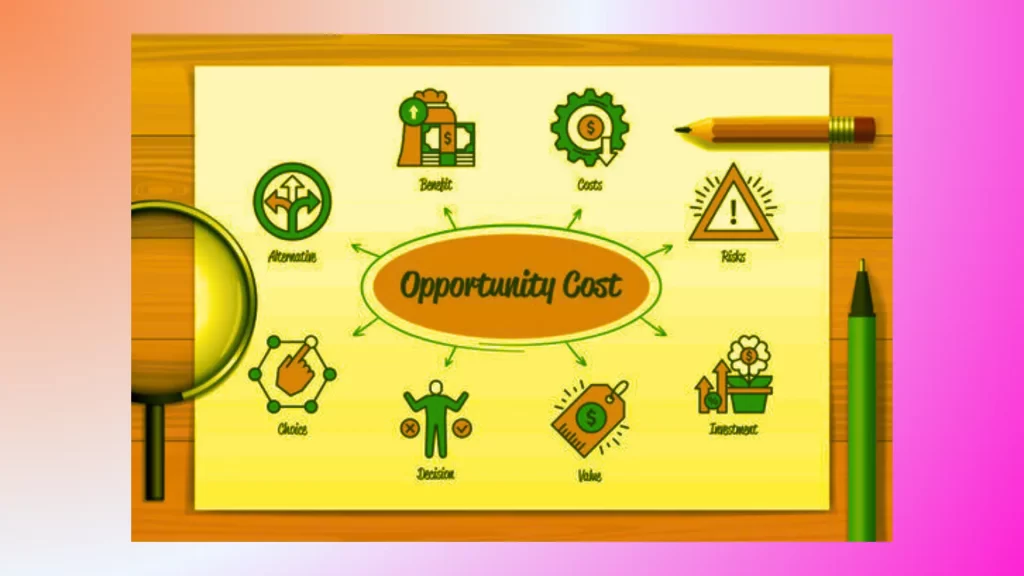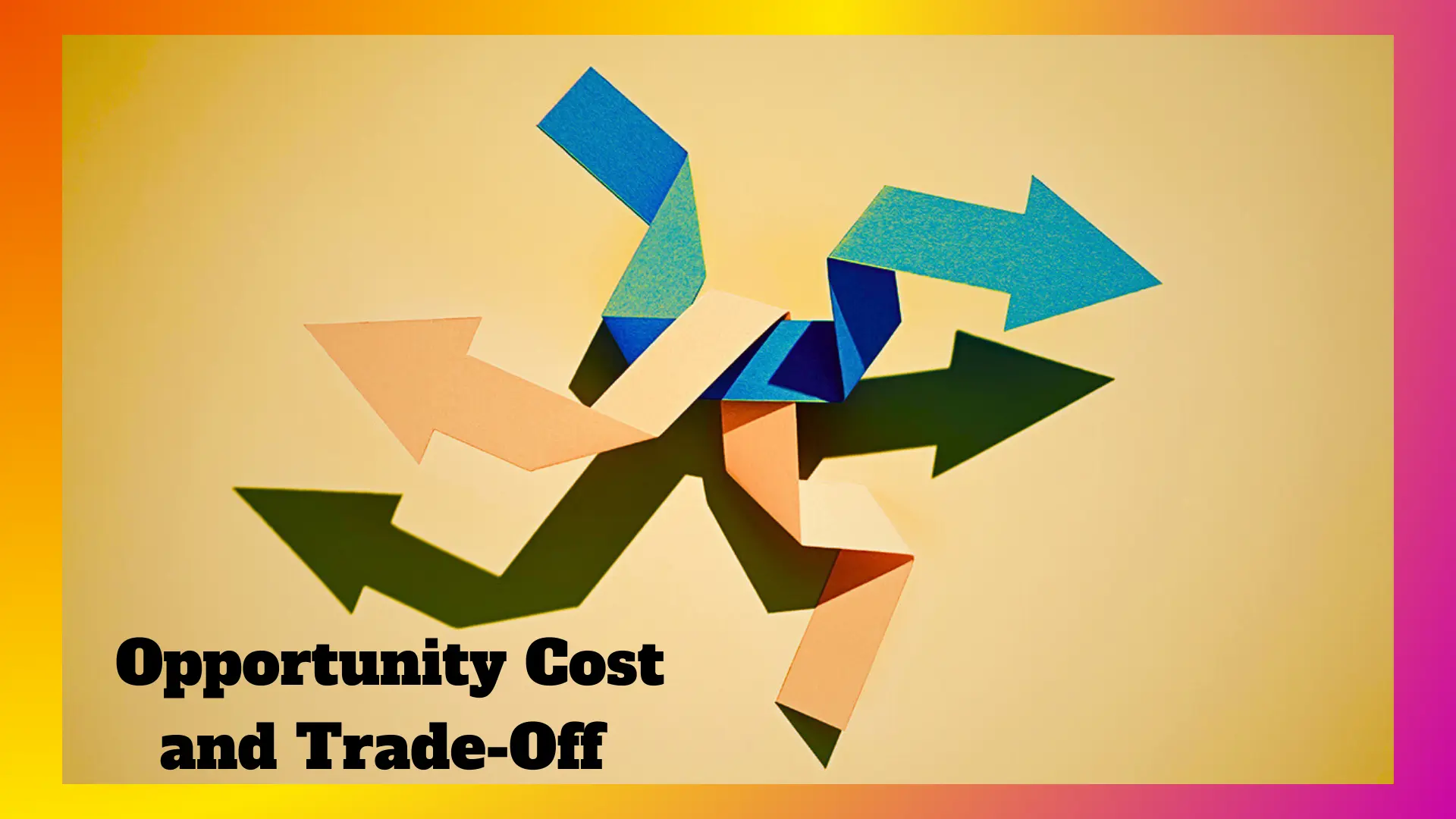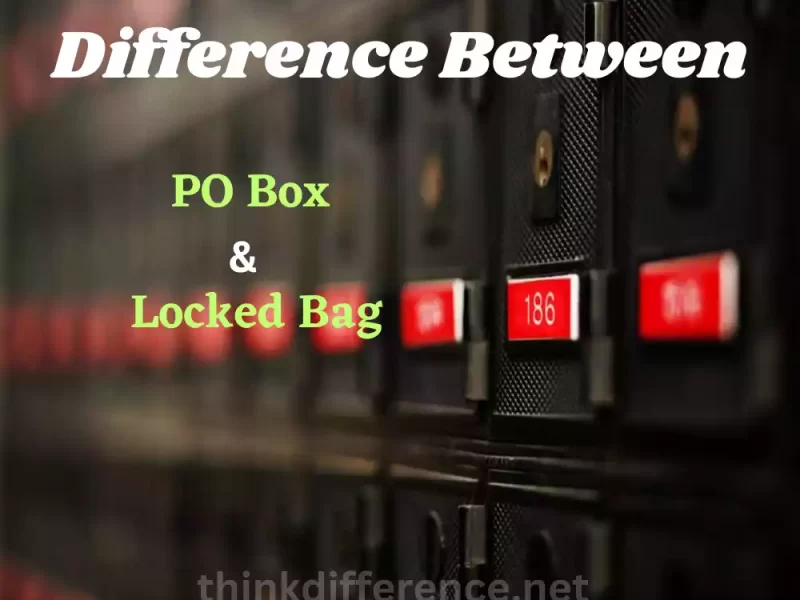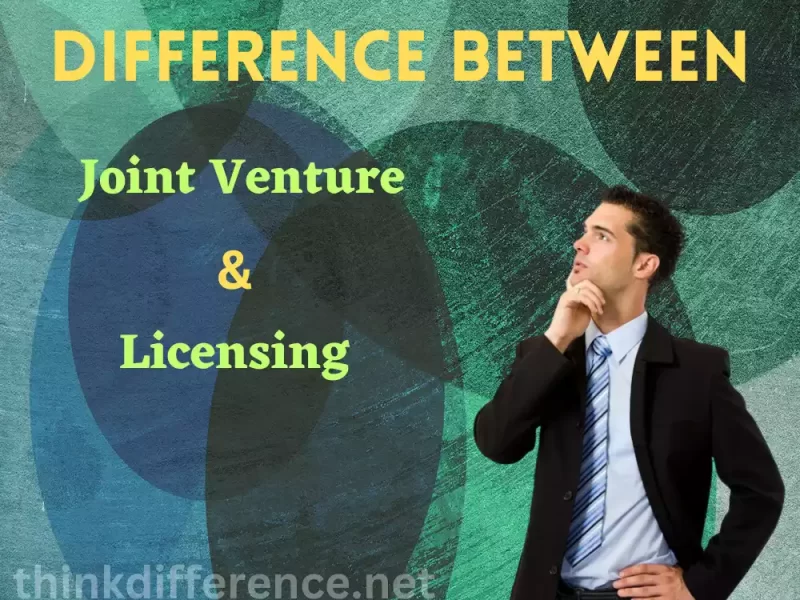An Introduction on Opportunity Cost and Trade Off
Opportunity Cost and Trade Off play an essential role in decision-making as well as resource allocation and prioritization, providing insight into the benefits, costs, and consequences of different options. Understanding this concept helps people make more informed decisions to optimize resource usage while aligning their actions with goals and values that resonate within themselves.
As part of our study of trade-offs and opportunity costs, we will investigate their definitions, variations, and applications in daily life as well as ways of effectively managing them. By understanding them better we can enhance our decision-making skills as we navigate a tangled web of trade-offs in resource allocation decisions.
What is Opportunity Cost?
Opportunity cost is the value or benefit that is forfeited or given up when choosing one option or course of action over another. It represents the next best alternative that could have been pursued but was not chosen.

Before making decisions, people, companies or governments should carefully assess the tradeoffs associated with making that choice. Selecting one option often results in forfeiting potential gains or benefits associated with other choices – these missed opportunities constitute the cost of opportunity lost.
Imagine this someone has $1,000 they must decide between investing or spending for travel purposes. If they choose to invest, the opportunity cost would be the potential returns and profits they could have earned from alternative investments or uses of the money. Conversely, if they choose the vacation, the opportunity cost would be the potential financial growth that could have been achieved through investing.
Opportunity cost is influenced by factors such as time, resources and alternatives available. It is based on the concept of scarcity, which recognizes that resources are limited and have alternative uses. Understanding the cost of opportunity is integral for making informed decisions, enabling both individuals and businesses to weigh up tradeoffs as well as evaluate actual advantages and costs associated with various alternatives and make more educated choices based on their goals and ambitions.
What is Trade Off?

Tradeoff refers to the act of exchanging one thing for something else when faced with limited resources, competing objectives or multiple alternatives. Making decisions means choosing an action in exchange for decreasing or forgoing certain advantages or benefits of another option.
Reasons behind trade-offs may include limited resources (time or money). Pursuit of one goal usually necessitates giving up something else or making difficult choices, trade-offs can apply across many areas including personal decisions and business ventures as well as social issues.
Tradeoffs may arise depending on your scenario and available options.
Here are a few examples:
- Quantity and Quality: Producing more often means sacrificing its quality. Companies may produce additional units for an affordable price but this could affect its final form.
- Short-Term Versus Long-Term Decisions: These decisions often necessitate an evaluation of immediate versus long-term advantages and costs, for instance spending money immediately rather than investing it for long term growth may be considered short term decisions.
- Time Allocation: Devoting too much of one activity could cut into time allocated for others; for instance, devoting too much attention to work could leave less free time for family activities or leisure pursuits.
Tradeoffs can be subjective decisions that depend on individual priorities and circumstances surrounding any given choice you make. Care should be taken in considering both advantages and costs for every option before selecting one over another decision.
Recognizing and understanding trade-offs are central to effective decision-making as it allows individuals and companies alike to consider all potential implications of their choices, make well-informed choices based on objectives and constraints, allocate resources efficiently and allocate them wisely. When considering various trade-offs they can choose an option which aligns best with their goals while yielding maximum benefits.
Importance of Opportunity Cost and Trade-Off
Opportunity cost and trade-offs are important concepts with several implications and benefits.
Here’s why they are significant:
- Informed Decision-Making: Understanding opportunity cost and trade-offs helps individuals, businesses and policymakers make more informed decisions. By considering the potential benefits and drawbacks of different options and weighing the associated costs, decision-makers can evaluate the overall value and make choices that align with their goals and priorities.
- Resource Allocation: Both opportunity cost and trade-offs play a crucial role in allocating limited resources effectively. By recognizing the value of forgone alternatives and considering trade-offs, individuals and organizations can optimize the allocation of resources such as time, money, and energy. This leads to efficient resource utilization and maximized benefits.
- Long-Term Planning: Opportunity cost is particularly important for long-term planning. Decision makers can assess potential gains and losses associated with various options to better assess their long-term effects, which allows for effective strategic decision-making that considers tradeoffs between options as well as any long-term effects that they might cause.
- Prioritization and Goal Setting: Opportunity cost and trade-offs help individuals and organizations prioritize their goals and set clear objectives. By understanding their various options and their associated expenses and rewards, decision makers will be better equipped to identify which are willing to sacrifice and which offer more. This facilitates focused decision-making aligned with their priorities.
- Risk Assessment: Opportunity cost and trade-offs involve assessing risks. By understanding the potential gains and losses of different options, decision-makers can evaluate the risks associated with each choice. This helps in mitigating risks, minimizing potential losses and making decisions that balance rewards with acceptable levels of risk.
- Economic Efficiency: In economics, opportunity cost is a fundamental concept for evaluating economic efficiency. It allows for the assessment of the costs and benefits associated with different choices, investments and resource allocations. Understanding trade-offs helps in optimizing economic decisions and maximizing overall societal welfare.
- Accountability and Evaluation: Understanding opportunity cost and trade-offs enhances accountability and evaluation of decisions. By considering the alternatives and their trade-offs, decision-makers can justify and explain their choices based on the expected benefits and the opportunity cost of the forgone alternatives. Transparency and accountability in decision making processes is increased accordingly.
Exploring options costs and tradeoffs is essential in making informed decisions regarding resource distribution efficiently prioritization risk analysis and future planning. These concepts help individuals and organizations evaluate the true costs and benefits of different options, make choices that align with their objectives and optimize resource utilization for maximum overall value.
Differences between opportunity cost and trade-off
Although both concepts share similarities, there are important distinctions.
Here are the major points:
1. Definition:
- Opportunity cost: It refers to the value or benefits that are forgone or sacrificed when choosing one option over another. It represents the next best alternative that could have been pursued but was not chosen.
- Trade-off: It refers to the act of sacrificing or giving up one thing in exchange for another. It involves making a decision that involves selecting one option or course of action while relinquishing or reducing the benefits or advantages of another option.
2. Focus:
- Opportunity cost: It focuses on the value or benefits that are given up when choosing one option. It emphasizes the comparison between the chosen option and the forgone alternative.
- Trade-off: It focuses on the act of sacrificing or compromising one thing to obtain another. It emphasizes the decision-making process and the trade-offs involved in selecting a particular option.
3. Perspective:
- Opportunity cost: It is a perspective from which choices are evaluated and compared. It involves considering the benefits and drawbacks of different options and assessing the value of the alternatives that are not chosen.
- Trade-off: It is an action or decision that is taken to prioritize one thing over another. It involves actively selecting one option and accepting the compromises or sacrifices associated with it.
4. Time Factor:
- Opportunity cost: It often involves considering the long-term consequences of a decision. It focuses on the potential gains or benefits that could have been achieved over time if an alternative option had been chosen.
- Trade-off: Decisions taken over both short- and long-term can benefit from considering this method. It involves immediate sacrifices or compromises to achieve specific objectives or outcomes.
5. Application:
- Opportunity cost: It is widely used in economics, finance and decision-making analysis. It helps in assessing the efficiency and profitability of investments, resource allocation and pricing strategies.
- Trade-off: It is a general concept applicable to various domains, including personal choices, business decisions and societal dilemmas. It is relevant in evaluating different options and making choices based on the benefits and drawbacks of each
option.
Opportunity cost focuses on the value or benefits foregone when choosing one option over another, while trade-off emphasizes the act of sacrificing or compromising one thing to obtain another. Opportunity cost is about the comparison of alternatives, while trade-off is about the decision-making process itself. Opportunity costs should typically be evaluated over a long-term horizon and trade-offs could apply both short- and long-term decisions.
Applications in Daily Life
Opportunities cost and tradeoffs can be useful tools in many aspects of our lives, for instance in:
- Personal Finance: When managing personal finances, understanding opportunity cost and trade-offs is crucial. It involves making choices about spending, saving and investing money. Opting to invest your savings in travel could mean forgoing opportunities to save and invest for future plans like purchasing a house and/or investing into companies.
- Time Management: Time is a limited resource and understanding trade-offs helps in effective time management. It involves prioritizing tasks, activities and commitments. For example, choosing to spend time on leisure activities may mean sacrificing time that could have been spent on professional development or household chores.
- Education and Career Choices: Opportunity cost plays a significant role in education and career decisions. Choosing a particular course of study or career path means forgoing other options. For instance, pursuing a higher education degree may involve the opportunity cost of lost income during the study period and potential career opportunities that could have been pursued instead.
- Health and Lifestyle Choices: Making healthy lifestyle choices often requires trade-offs. For example, choosing to exercise regularly and maintain a balanced diet may mean sacrificing leisure time or indulging in unhealthy habits. Recognizing these trade-offs can help in making informed decisions for overall well-being.
- Consumer Decisions: When making purchasing decisions, individuals consider the trade-offs between different products or brands. People assess factors like price quality features and personal preferences when trying to decide the most cost-effective investment value for money solution. The chosen product represents a trade-off between desired attributes and the cost associated with it.
- Relationships and Social Life: Balancing personal relationships and social commitments involves trade-offs. Choosing to spend time with certain friends or engaging in particular activities may mean sacrificing time with other friends or engaging in alternative activities. Understanding trade-offs helps in managing relationships and prioritizing social engagements.
- Travel and Experiences: Planning vacations or travel experiences often requires evaluating trade-offs. Choosing one destination or experience may mean sacrificing the opportunity to explore other places or engage in different activities due to time, budget or resource constraints.
By recognizing the concepts of opportunity cost and trade-offs, individuals can make more informed decisions in various aspects of daily life. They can evaluate the benefits and drawbacks of different options, prioritize their goals and optimize resource allocation to maximize overall satisfaction and well-being.
Managing Opportunity Cost and Trade-Off

Managing opportunity cost and trade-offs effectively involves thoughtful decision-making and strategic planning.
Here are some strategies to help manage these concepts:
- Define Your Goals: Setting clear short and long term goals can help ensure you take steps that align with achieving them. Understanding exactly what it is you hope to do allows for the development of strategies to meet them.
- Evaluate Alternatives: Identify and evaluate the alternatives available to you. Consider the potential benefits, drawbacks, and opportunity costs associated with each option. Assess how each alternative aligns with your goals and priorities.
- Quantify and Compare: Try to quantify the value or impact of different options. This can help you compare the opportunity costs and benefits more objectively. Assign values or weights to different factors to determine which option provides the most favorable balance.
- Consider Time Horizon: Recognize the time dimension of opportunity cost and trade-offs. Carefully consider both short- and long-term consequences when making choices. Assess whether a choice will bring immediate benefits at the expense of future gains or vice versa.
- Prioritize Trade-offs: Prioritize the trade-offs based on their significance and potential impact on your goals. Identify the trade-offs that are acceptable or desirable given your priorities and values.
- Seek Information and Advice: Gather relevant information and seek advice from experts or trusted sources when making important decisions. Consider the insights and experiences of others who have faced similar choices.
- Regularly Review and Adjust: Periodically review your decisions and reassess the trade-offs. As circumstances change, your goals and priorities may shift as well. Be open to adjusting your choices and strategies accordingly.
- Embrace Flexibility and Adaptability: Recognize that managing opportunity cost and trade-offs requires flexibility. Be willing to adapt and modify your decisions as new information or opportunities arise.
- Learn from Experience: Reflect on past decisions and evaluate their outcomes. Learn from your experiences to make better-informed choices in the future. Understand how different trade-offs and opportunity costs have influenced your results.
- Focus on Optimization, Not Perfection: Strive for optimizing your decisions rather than seeking perfection. It is rarely possible to achieve the perfect balance between all factors. Instead, aim to make choices that provide the best overall value and align with your goals.
By applying these strategies, you can effectively manage opportunity cost and trade-offs. You can make decisions that consider the trade-offs involved, prioritize your goals and allocate resources optimally to maximize benefits and minimize drawbacks. Remember that managing these concepts is an ongoing process that requires continuous evaluation and adjustment.
Conclusion
Opportunity cost and trade-offs are inseparable elements of decision-making. By grasping these concepts, individuals and businesses can make more informed choices and optimize resource allocation. Understanding opportunity cost’s psychological aspects helps navigate decision-making challenges, fostering a clearer path to satisfaction and success.



